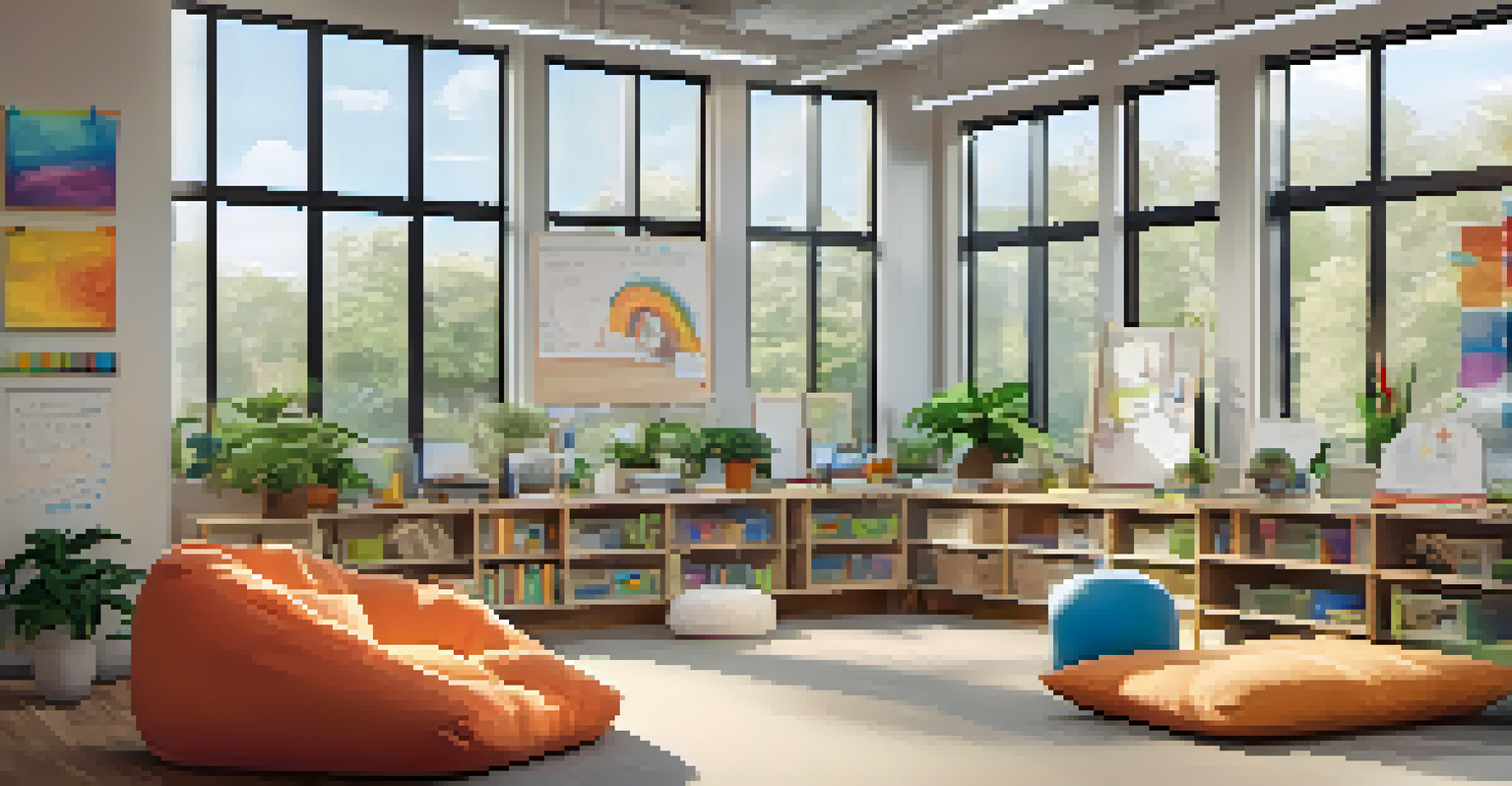Designing Flexible Learning Environments for Individual Needs

Understanding the Importance of Flexible Learning Spaces
Flexible learning environments are essential in today's educational landscape. They allow educators to cater to diverse learning styles, ensuring that each student can thrive. By creating spaces that are adaptable, we can support a variety of activities, from group projects to individual study sessions.
The greatest gift we can give our children is the opportunity to learn in an environment that inspires them to think critically and creatively.
These environments promote engagement and collaboration, encouraging students to take ownership of their learning. Think of it like a buffet: when learners have choices, they are more likely to find what suits their tastes and needs. This flexibility not only enhances learning but also fosters a sense of belonging.
Ultimately, flexible learning spaces help break down barriers to education. They empower students to learn in ways that resonate with them personally, leading to improved outcomes and greater satisfaction.
Identifying Individual Learning Needs and Preferences
To design effective flexible learning environments, it's crucial to understand the unique needs of each learner. This begins with assessing their strengths, weaknesses, and preferred learning styles. Some students may thrive in visual settings, while others may excel in auditory or kinesthetic environments.

Engaging with students through surveys or discussions can provide valuable insights into their preferences. By actively involving them in the process, educators can create a sense of ownership and agency. This step is like gathering ingredients before baking; knowing what you have on hand can make all the difference in the final product.
Flexible Spaces Enhance Learning
Flexible learning environments cater to diverse learning styles, promoting engagement and collaboration among students.
Moreover, recognizing the diversity in learning needs helps create inclusive spaces that cater to everyone. This not only supports individual growth but also promotes a collaborative community where all voices are heard.
Incorporating Technology for Enhanced Flexibility
Technology plays a pivotal role in designing flexible learning environments. With tools like interactive whiteboards, online resources, and collaborative software, educators can create dynamic spaces that adapt to various learning activities. These technologies enable real-time collaboration, even in physical spaces.
Education is not the filling of a pail, but the lighting of a fire.
Imagine a classroom where students can seamlessly transition between group work and solo projects using devices that support both. This flexibility can dramatically enhance the learning experience, making it more engaging and effective. It's like having a Swiss Army knife for education—versatile and suitable for various tasks.
Additionally, technology can help track student progress and personalize learning pathways. By leveraging data analytics, educators can make informed decisions about how to adjust the learning environment to better meet individual needs.
Designing Physical Spaces for Varied Activities
The physical layout of a learning environment significantly impacts how students interact and engage. Incorporating different zones for collaboration, quiet study, and hands-on activities can make a space more versatile. Think of it as creating a modular workspace where each section serves a unique purpose.
Using movable furniture allows educators to quickly adapt the space for various activities, promoting fluid transitions between tasks. This flexibility encourages students to move around, collaborate, and engage more deeply with their peers. It's like rearranging furniture in your living room to create a more inviting atmosphere.
Technology Boosts Learning Flexibility
Incorporating technology in learning spaces allows for dynamic interactions and personalized learning pathways.
Moreover, incorporating natural light, colors, and comfortable seating can enhance the overall learning experience. A well-designed space can motivate students and foster a positive mindset, ultimately leading to better educational outcomes.
Fostering a Collaborative Learning Culture
Creating a flexible learning environment is not just about physical space; it’s also about cultivating a collaborative culture. Encouraging students to work together fosters communication, teamwork, and problem-solving skills. These are essential life skills that extend beyond the classroom.
Group projects and peer-to-peer interactions can be seamlessly integrated into flexible spaces, allowing students to learn from one another. This collaborative approach is like being part of a sports team; everyone has a role, and success depends on working together.
Additionally, fostering a sense of community helps students feel supported and valued. When they know their contributions matter, they are more likely to engage actively in their learning.
Implementing Adaptive Assessment Methods
Assessment in flexible learning environments should be as adaptable as the spaces themselves. Traditional testing methods may not always reflect a student's understanding or capabilities. Instead, incorporating diverse assessment techniques can provide a more comprehensive view of student progress.
For example, using portfolios, presentations, and peer evaluations allows for a richer evaluation of student learning. This approach is similar to having a multi-course meal; each dish offers something unique, contributing to a complete experience.
Collaboration Cultivates Community
Fostering a collaborative culture within flexible environments helps students develop essential life skills and feel valued.
Moreover, adaptive assessments can help identify areas where students may need additional support. By tailoring evaluations to individual learning needs, educators can provide targeted feedback that drives improvement.
Continuously Evolving the Learning Environment
Designing flexible learning environments is not a one-time task; it requires ongoing evaluation and adaptation. As educational needs change and new technologies emerge, it’s essential to remain responsive. Regular feedback from students and educators can help identify areas for improvement.
Think of it as gardening; you must tend to your plants regularly, adjusting sunlight and water to help them thrive. By staying attuned to the needs of learners, educators can cultivate an environment that keeps growing and evolving.

Ultimately, a commitment to continuous improvement ensures that learning spaces remain effective and relevant. This ongoing process fosters a culture of innovation and responsiveness, preparing students for an ever-changing world.